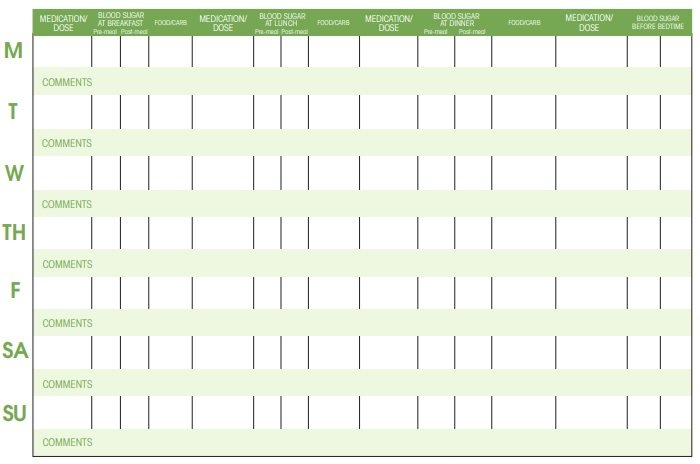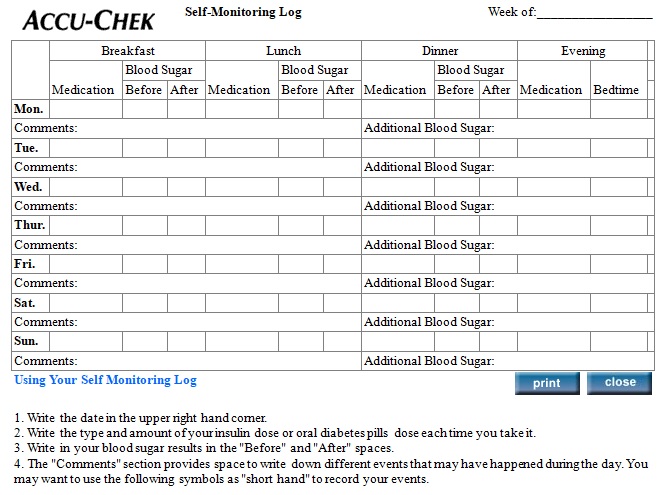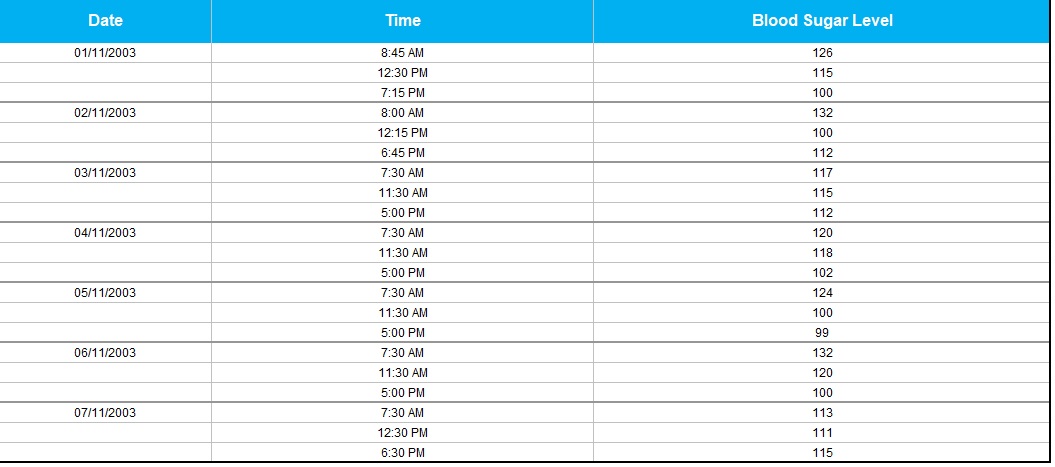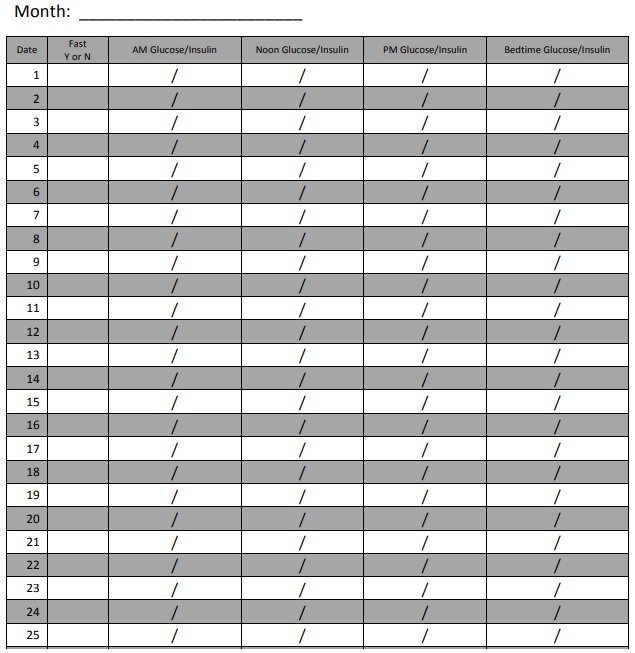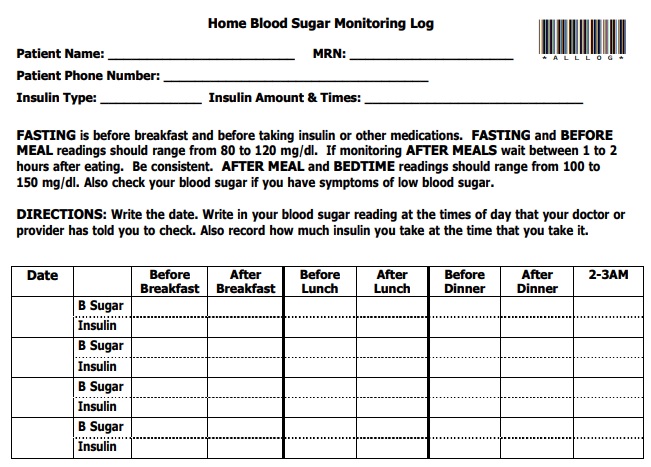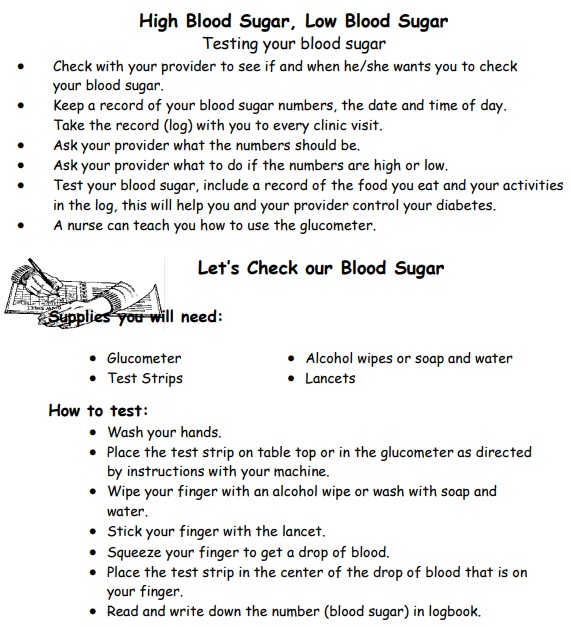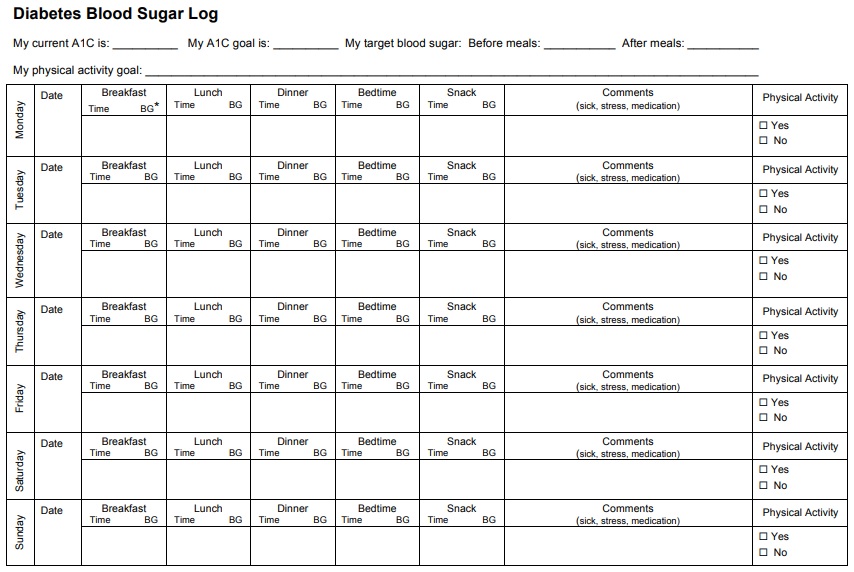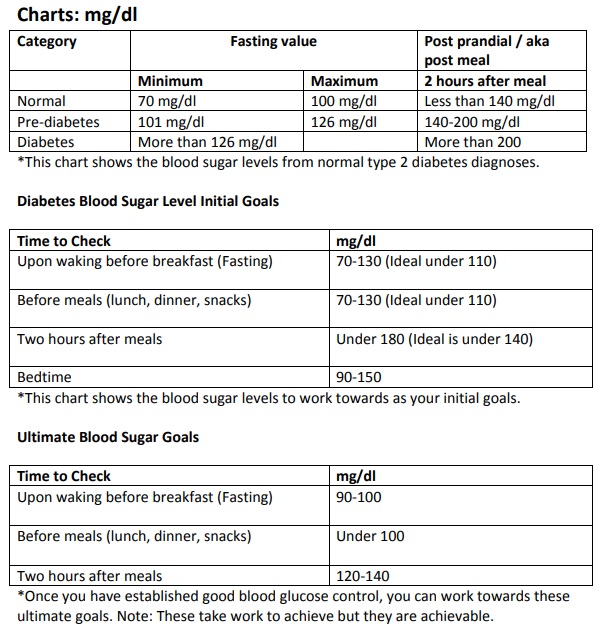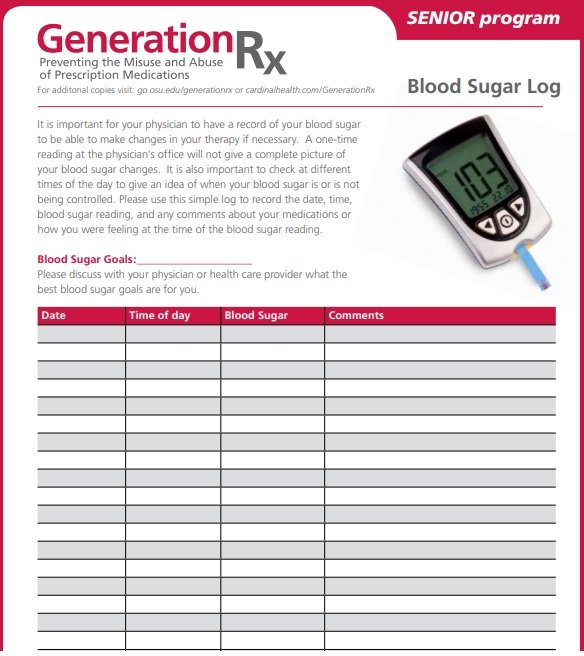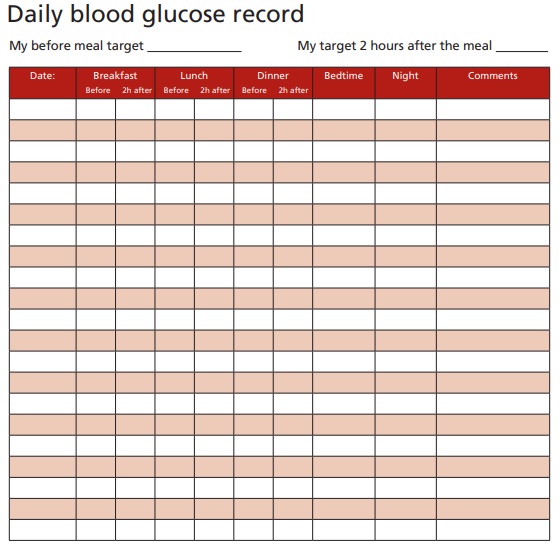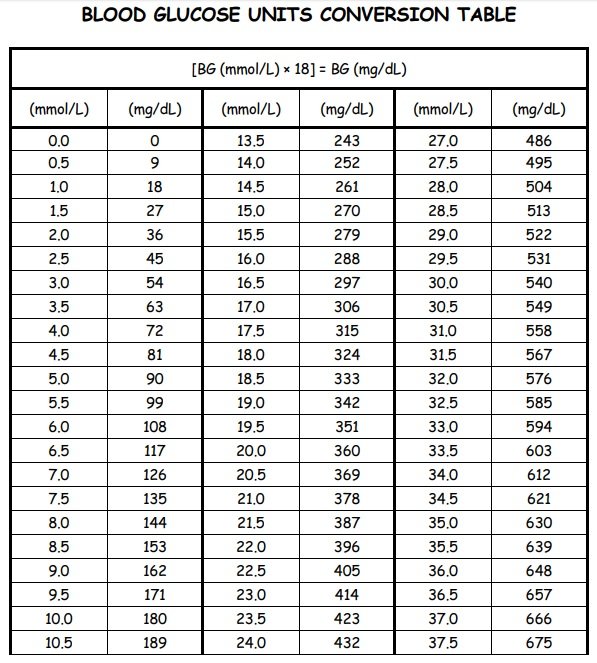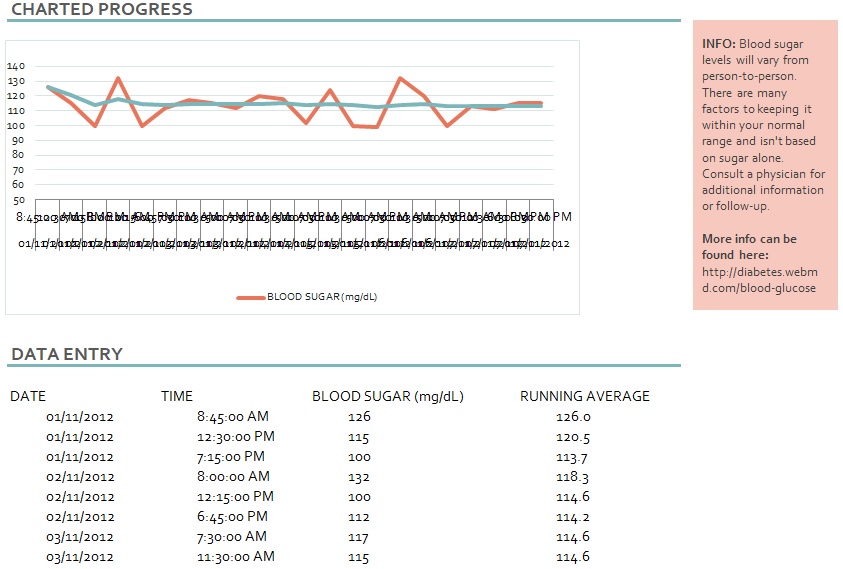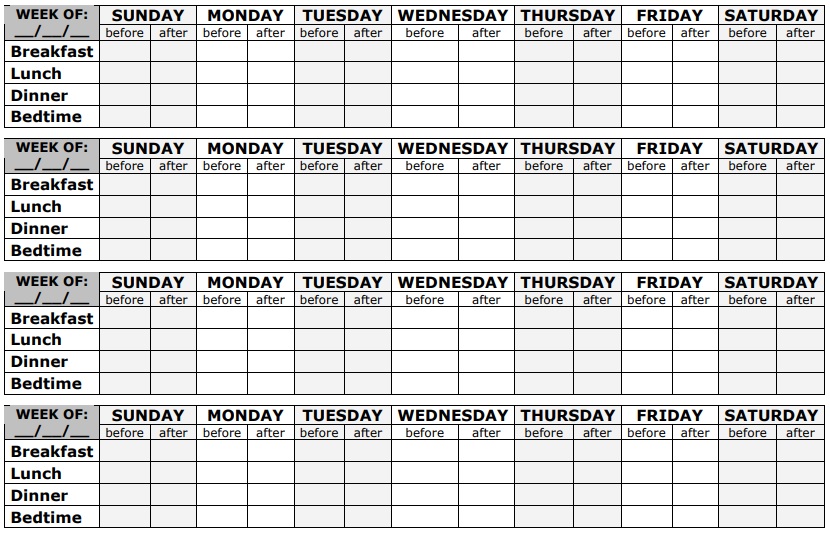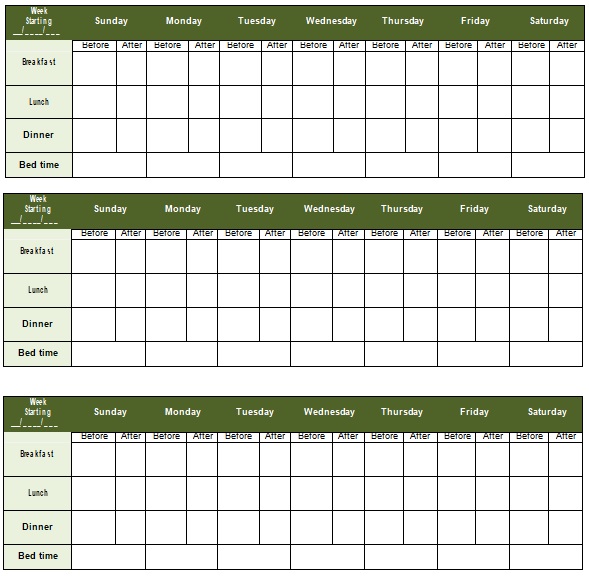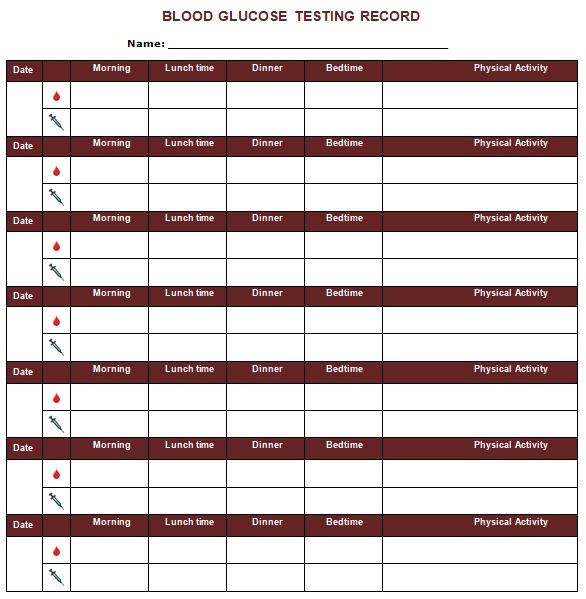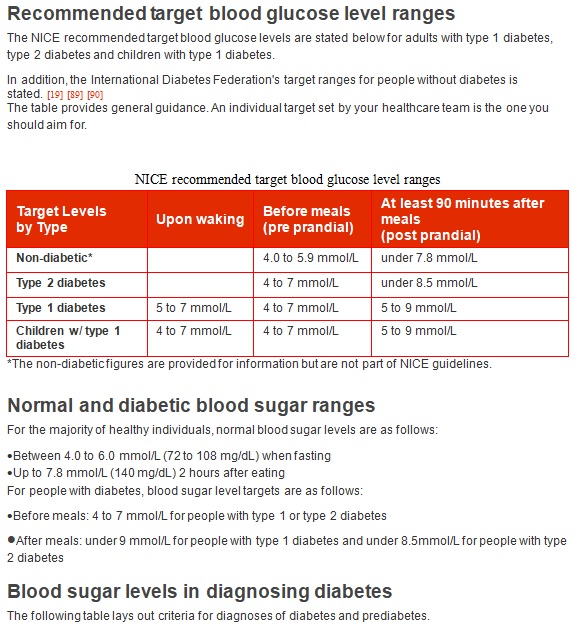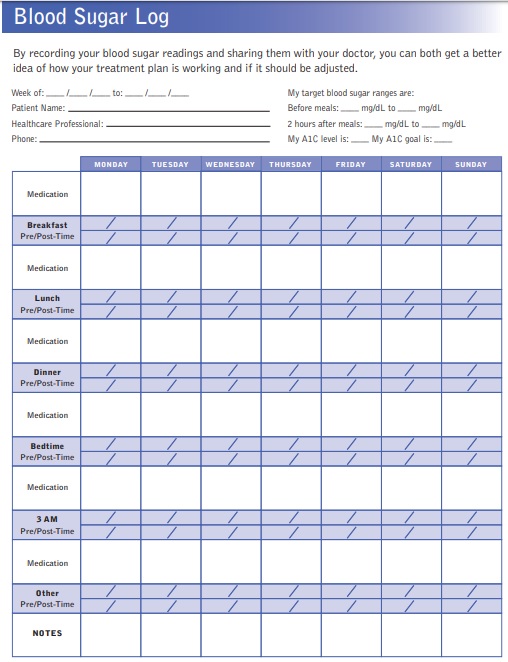Blood glucose or blood sugar chart template defines the ideal or normal blood sugar levels of a person of certain age throughout the day, such as fasting, and 1 – 2 hours after a meal.
Blood sugar or glucose management is a critical element of the person having a disease of diabetes. They need to continuously monitor their blood sugar levels and take steps to keep them in the normal range.
It is important to understand what is blood sugar? So, the importance of a blood sugar chart can be understood. Blood sugar or glucose is a quantity of sugar found in the blood and measure in mg/dL and mmol/L. It is a key source of energy and nutrients for the body.
The production, storage, and regulation of the glucose level in the blood is complex process management by body organs such as the liver, small intensive, and pancreas. You may also like the progress note template.
The body breaks the carbohydrates and converts them to glucose which is a key source of energy for the body muscles and organs. The insulin hormone is produced by the pancreas that allows the body cells to consume glucose from the blood as energy. So, the pancreas maintains the level of glucose or sugar in the blood.
When the pancreas doesn’t produce enough insulin or cells reject the insulin so the glucose stays in the blood and causes a number of complexities and issues for diabetes patients.
Therefore, it is important for diabetes patients to efficiently monitor their blood sugar levels and modify the diet accordingly to manage it.
Table of Contents
- 1 What is a blood sugar chart?
- 2 What does each blood sugar test type do?
- 3 How to use the Blood Sugar Chart Template?
- 4 How to measure blood sugar?
- 5 How to use a blood sugar chart?
- 6 Which factors can affect the blood glucose level?
- 7 What are the symptoms of diabetic ketoacidosis?
- 8 Faqs (Frequently Asked Questions)
What is a blood sugar chart?
A blood sugar chart determines the diabetic person’s sugar levels throughout the day involving before and after meals. This chart is used by doctors to set target goals and monitor diabetes treatment plans. Moreover, diabetic patients used it to self-monitor their blood sugar test results.
For blood sugar test results this chart serves as a reference guide. It is the most significant tool for diabetes management. If a diabetic patient wants to keep his/her glucose level within normal range then he/she must use this chart.
What does each blood sugar test type do?
Fasting blood sugar
Fasting blood sugar measures blood glucose when you haven’t eaten for at least eight hours. This is the first test taken to diagnose diabetes and pre-diabetes.
Two hours postprandial blood sugar
Two-hour postprandial blood sugar measures blood glucose just two hours after you start eating a meal. This test doesn’t diagnose diabetes, it just indicates whether the person with diabetes consuming the right insulin amount with meals.
Random blood sugar
You can take several random measurements because this test measures blood glucose no matter when you last ate. Random testing is useful as blood sugar levels throughout the day do not vary widely in healthy people. This test is also referred to as a blood glucose test.
Glucose tolerance test
A glucose tolerance test is used to diagnose diabetes and pre-diabetes especially during pregnancy. To measure a series of blood sugar, a person has to consume a sweet drink that has glucose in it.
How to use the Blood Sugar Chart Template?
Blood sugar charts are developed by expert endocrinologists. It shows the level of sugar in the blood for a person of a certain age. The level of blood sugar is different throughout the day. So, it is important to analyze the blood sugar relative to before and after a meal.
The blood sugar levels are usually monitored in mg/dL. So, the blood sugar charts can be found as per the below classification:
- Fasting Blood Sugar Level
- Before Meal Blood Sugar Level
- 1 – 2 Hours After-Meal Blood Sugar Level
- Before Exercise Blood Sugar Level
- Bedtime Blood Sugar Level
Although, it is recommended to discuss the specific case with your doctor. However, the experts have defined the fasting blood sugar values that indicate different conditions:
- Dangerously Low < 50 mg/dL
- Low < 70 mg/dL
- Normal = 70 – 100 mg/dL
- Borderline = 120 – 180 mg/dL
- High = 200 – 280 mg/dL
- Dangerously High > 300 mg/dL
These conditions are medically classified as:
- Hypoglycemia < 70 mg/dL
- Normoglycemia = 70 – 99 mg/dL
- Prediabetes = 100 – 125 mg/dL
- Diabetes > 125 mg/dL
Another measure of the blood sugar level expressed in the blood sugar chart template is A1C. It is the average blood sugar level over the past 3 months. It provides a better understanding of prediabetes and type-2 diabetes. The blood sugar level in A1C is measured in percentage and indicates:
- Normal < 5.7%
- Prediabetes = 5.7 – 6.4%
- Diabetes > 6.4%
The blood sugar chart templates are easily available on the internet to use for effective blood glucose management.
How to measure blood sugar?
The blood glucose meter is generally used to measure the blood glucose levels. A drop of blood is applied to a chemically treated disposable test strip. Then, the test strip is inserted into a blood sugar meter. The blood glucose meter detects the reaction between the test strip and blood and indicates the results in mg/dl or mmo1/L units.
How to use a blood sugar chart?
If you track your blood sugar level regularly along with exercise and diet then you can use those diet and exercise that keep your blood sugar at the right level and stay healthy. You can also consult with your doctor to get a better care plan.
Firstly, check your blood sugar level with a blood glucose meter at any time especially before a meal or after two hours of a meal. However, most people check it before meals and before they go to bed at night.
Next, after checking blood sugar level, enter the date, time, level, and any notes in the blood sugar chart. Notes in the chart will inform what food you ate, what exercises you are doing, and anything else that you think may affect your level.
You can also consult with your doctor for the best time to take your levels and also to identify the effects your diet and exercise plan are having.
Which factors can affect the blood glucose level?
Here are the factors that may lead to high or low blood glucose levels;
The type of food eaten
The food that you eat can also lead to high or low blood sugar levels in your bloodstream.
Medical conditions
Your body releases hormones when you are sick to fight the disease which may lead to high blood glucose levels.
Menstrual periods
The blood sugar level is high during menstrual periods because of hormonal imbalances.
Dehydration
Your body has high blood sugar levels within your bloodstream due to a lack of enough fluids within the body.
Alcohol intake
When you take alcohol on an empty stomach, it may lead to low blood sugar levels.
Physical activity
The body becomes more sensitive to insulin when you do physical activity or exercise more than required by the body. It reduces your blood glucose levels.
Medications
The blood sugar level gets higher because of side effects from other medications like antipsychotic medications or steroids.
Stress
The adrenal glands release glucose from various organs in your body when you are stressed. This may lead to elevated glucose levels in the bloodstream.
What are the symptoms of diabetic ketoacidosis?
Basically, diabetic ketoacidosis is a serious type of diabetes that usually happens when a human body releases high levels of blood acids known as ketones. This generally occurs when your body can’t produce sufficient insulin and due to this your body starts to break down fat as fuel. Then, a buildup of acid in the bloodstream produces known as ketones, and this leads to diabetic ketoacidosis if untreated.
The symptoms of diabetic ketoacidosis often develop quickly. You may notice the following symptoms;
- Extreme thirst
- Urinary frequency means frequent urination
- Nausea
- Vomiting
- Weakness
- Problem in breathing or shortness of breath
- Fruity-scented breathe
- Confusion
Faqs (Frequently Asked Questions)
At fasting means before breakfast normal blood sugar level is less than 100 mg/dL. On the other hand, at random means after two hours of eating normal blood sugar level is less than 140 mg/dL. A blood sugar level range between 140 and 199 mg/dL indicates prediabetes.
A diabetic coma happens when your sugar gets too high such as 600 mg/dL or more. It causes you to become very dehydrated. Generally, people with type 2 diabetes affects by it. It is common between elder people, people that are chronically ill, and disabled.
Drink a large glass of water and exercise in case your blood sugar levels exceed 180 mg/dl. Do one of the following things if your blood sugar is lower than 70 mg/dl;
1- Chew four glucose tablets
2- Drink 4 ounces of regular soda
3- Chew four pieces of hard candy
4- Drink 4 ounces of fruit juice
You should get an A-one-C test at least twice a year. However, you will have to take the A1C test more often if your blood sugar levels are higher than expected number.

